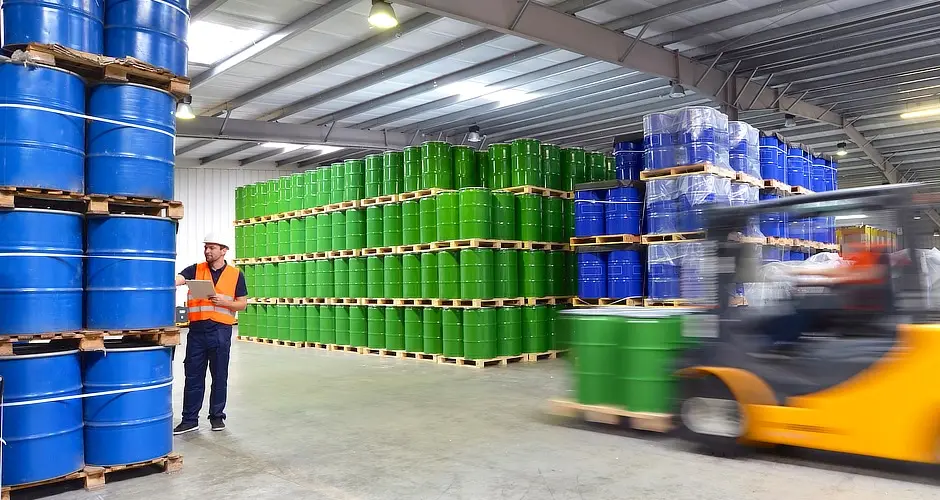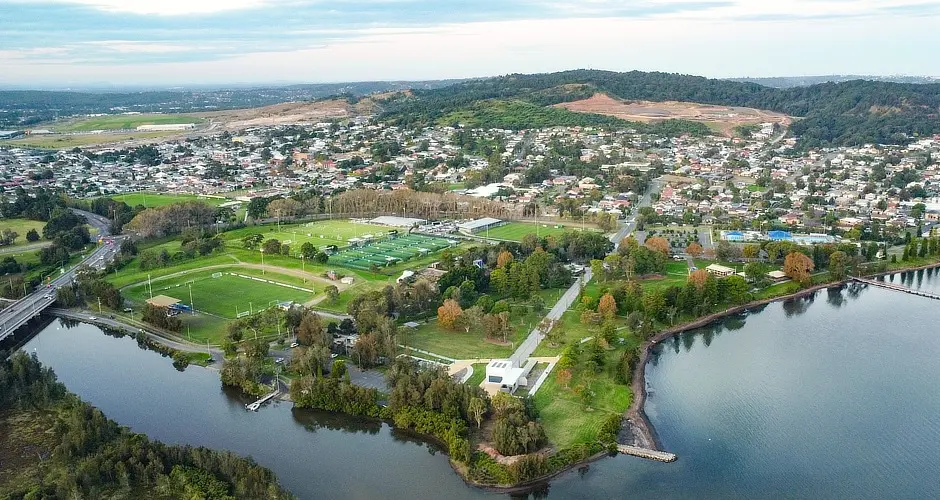Track and trace in logistics refers to the technologies and methods used to determine the current and past locations of objects, including raw materials, products, and assets such as shipping containers, parcel cages, vehicles and more. This system plays a crucial role in modern and smart supply chains, providing transparency and access to vital data that enables efficient management of resources, assets and processes.
Asset tracking technology can also offer more than just location – some solutions include temperature and humidity monitoring, tamper detection and measurement (such as when something is empty or full).
For business owners and managers, understanding and implementing this technology can mean the difference between efficiency and chaos. This blog post delves into the world of track and trace, offering insights into its mechanisms, benefits, and the technological advancements that are revolutionising this domain.
What does a track and trace system do
Track and trace in logistics is a system that enables businesses to locate and monitor the movement of their goods and assets throughout the supply chain. This system is pivotal in ensuring the smooth transit of items, providing data on their whereabouts and condition.
Track and trace systems have become indispensable in logistics, offering a level of transparency that was previously unattainable. They help in managing logistics operations, reducing the risk of lost or misplaced items, and significantly enhancing customer satisfaction by providing reliable delivery estimates.
What is the difference between tracking and tracing in logistics
While often used interchangeably, tracking and tracing serve distinct purposes in logistics. Tracking refers to the monitoring of the current location of goods, whereas tracing involves the historical data of the journey, helping to identify the path taken by the goods.
Understanding the unique roles of tracking and tracing is essential for logistics managers to efficiently handle supply chain operations and address any issues that may arise during transit.
Technologies used to track and trace in logistics
Track and trace technologies come in many varieties:
- GPS tracking for real-time location monitoring
- RFID tracking (Radio Frequency Identification) for scanning and data collection
- barcode scanning, and
- Internet of Things (IoT) solutions
GPS Tracking
GPS (Global Positioning System) tracking is widely used for real-time location monitoring. It is particularly effective in outdoor environments, providing precise location data for vehicles and shipments.
GPS technology is effective for route optimisation, delivery tracking, and fleet management but it can be costly in some use cases as the data is transmitted constantly in real-time, resulting in a high connectivity cost.
RFID Tracking
Radio Frequency Identification (RFID) is another technology that collects data through scanning. RFID tags attached to assets transmit data to a reader, enabling inventory management and asset tracking without direct line-of-sight requirements.
This technology is useful in automating data collection and reducing human errors. However, RFID tracking systems can be costly to implement, and the range of RFID tags is relatively limited, making them less suitable for long-distance tracking.
Barcode Scanning
Barcode scanning is a straightforward and cost-effective track and trace solution. It involves scanning barcodes to track and manage goods throughout the supply chain.
While barcode scanning is simple to implement and use, it requires manual intervention for scanning each item, which can be time-consuming and prone to errors.
Internet of Things (IoT) Solutions
IoT solutions stand out as the most versatile and scalable option for track and trace in logistics, particularly suitable for massive deployments.
IoT combines various technologies, including GPS, Wi-Fi, and Bluetooth Low Energy (BLE), allowing for a wide range of device types and use cases. IoT devices, equipped with sensors, collect and transmit data over networks, providing insights into asset location, condition, and movement.
The flexibility of IoT is evident in its ability to provide seamless indoor and outdoor network coverage, utilising public Low Power Wide Area Network (LPWAN) or cellular networks without the need for extensive infrastructure setup. This capability makes IoT solutions highly adaptable to various environments, ensuring consistent and reliable asset tracking.
Each of these technologies and solutions offer advantages and are suited to different use cases. Understanding your business requirements first and foremost will help you select the most appropriate technology for your needs.
What can be tracked in Logistics

In logistics, track and trace can be applied to a wide range of assets:
- Shipping containers
- Parcel cages
- Intermediate Bulk Containers (IBCs) and industrial packaging
- Fleet vehicles
- Glass racks and A-frames
- Pallets
- Beer kegs
- and more
How Track & Trace is Transforming Industries
The impact of track and trace technology extends far beyond mere logistics management; it’s reshaping entire industries by enhancing operational efficiency, ensuring compliance with regulations, and safeguarding product quality.
From ensuring food safety and reducing wastage in the fresh food sector to guaranteeing the authenticity and safe delivery of pharmaceutical products, track and trace systems are not just enhancing operations; they are setting new standards in supply chain management.
Fresh food & perishables supply chain
Track and trace technology in the food supply chain ensures food safety and quality and enables businesses to comply with government and industry regulations.
In Australia, food transportation regulations, outlined in the Standard 3.2.2 of the Food Safety Practices and General Requirements, mandate process control requirements at each step of the food handling process, including during transportation. These regulations require that all entities involved in the food supply chain maintain certain standards for storing and transporting food, including temperature control.
According to the Australian Food Cold Chain Council, food wastage in Australia is worth a staggering AU $3.8 billion annually comprising:
- 25% (1,930,000 tonnes) of annual fruit and vegetable production worth $3.0 billion
- 3.5% of annual production of meat (155,000 tonnes) and seafood (8,500 tonnes) worth $670 million and $90 million respectively
- 1% (90,000 tonnes) of dairy products valued at $70 million
These estimates do not include impacts of poor temperature control which reduces product shelf life so the cost of the wastage is likely higher.
IoT sensors can be placed in transportation vehicles to continuously monitor and record temperature and humidity levels. This data can be accessed remotely by supply chain managers to ensure that the food is being transported under optimal conditions. The data can also be used to track whether the transportation asset (like a truck or container) is empty or full. This information is vital for optimising logistics and reducing costs, as it allows for better planning of transportation needs and reduces unnecessary trips.
Coles is using 4,500 IoT-enabled trackable food bins to transport their poultry, which has enabled them to optimise transport routes and equipment pooling based on usage patterns. They have reduced the cost of their asset pool required by 25% and tripled the amount of empty bins returned, reducing cost and waste.
Glass Industry
In the glass industry, track and trace technologies are being used to improve the efficiency of supply chains and reduce the risk of damage during transportation.
By tracking the movement of glass products, companies can optimise their delivery routes, monitor the condition of the glass, and ensure timely and safe delivery to customers. This not only enhances operational efficiency but also helps in maintaining high customer satisfaction levels.
Architectural Glass Products in New Zealand is tracking 1,750 delivery trolleys worth NZ $3,000 each, which transport their high-value and fragile glass products. They now have visibility of where their assets are, and have been able to guarantee their industry-leading 4-day order-to-delivery cycle.
Pharmaceutical Industry
The pharmaceutical industry benefits significantly from track and trace technologies. These systems help in ensuring the authenticity of drugs, combating counterfeit medications, and maintaining regulatory compliance.
By tracking the movement of pharmaceutical products from manufacture to distribution, stakeholders can ensure that medications are safely and securely delivered to their destinations, thereby protecting patient safety and upholding industry standards.
6 key benefits of track & trace technology
Track and trace technology offers benefits that streamline operations, enhance visibility, and improve customer service. By integrating this technology, businesses can address workflow inconsistencies, manage materials effectively, and optimise delivery processes.
1. Enhanced Visibility and Control
Track and trace provide end-to-end visibility of asset location and condition, crucial for all stakeholders in the logistics chain. This transparency is key in managing the material flow, enabling businesses to track production data automatically and comply with regulations.
Knowing the exact quantity, location, and condition of materials prevents disruptions like supply shortages or quality issues.
2. Optimising Logistics Operations
By monitoring incoming shipments, businesses can control product quality and manage inventory more effectively. Remote inventory access reduces the need for manual stocktakes, while data aggregation aids in accurate forecasting and production scheduling.
3. Minimising Loss and Theft
Asset tracking plays a crucial role in reducing misplaced or lost assets, thereby safeguarding investments. It enables businesses to track the exact movement and handling of their goods, minimising the risks associated with loss, theft, or tampering.
4. Improving Asset Utilisation
The data collected through asset tracking helps minimise idle time of assets, allowing for their efficient movement throughout the supply chain. This results in better resource management and cost savings.
5. Quality and Condition Monitoring
With track and trace, businesses can monitor the quality and condition of their goods. Alerts about temperature changes, shocks, or potential tampering help maintain product integrity, especially crucial in industries like food, pharmaceuticals, and fragile goods logistics.
6. Reducing Customer Support Workload
Finally, the technology reduces the workload on customer support teams. By providing visibility into the supply chain, businesses can proactively address issues, ensuring smooth transportation processes and elevating customer satisfaction.
Sustainability and Environmental Impact

The discussion around sustainability in logistics has gained unprecedented momentum, and track and trace technology is at the forefront of this eco-conscious shift. By enhancing efficiency and accountability in supply chains, this technology plays a crucial role in reducing environmental impact and promoting sustainable practices.
Optimising Routes for Reduced Emissions
One of the primary environmental benefits of track and trace systems is the optimisation of transportation routes. By providing data on vehicle locations and traffic conditions, these systems enable logistics managers to identify the most efficient routes. This not only saves time and fuel but also significantly reduces greenhouse gas emissions. In an industry traditionally associated with high carbon footprints, such efficient route management is a substantial step towards environmental responsibility.
Minimising Resource Wastage
Track and trace technology also aids in minimising resource wastage. Through accurate tracking of goods, businesses can reduce overstocking and underutilisation of resources. Efficient inventory management ensures that products are moved and used in an environmentally friendly manner, reducing the instances of spoilage, especially in the case of perishable goods like food and pharmaceuticals.
Enhancing Asset Utilisation
By tracking the usage and movement of containers, pallets, and vehicles, companies can avoid unnecessary trips and idle time. This not only streamlines operations but also contributes to a reduction in the overall environmental impact of logistics activities.
Driving Sustainable Practices
The visibility offered by track and trace systems encourages accountability and drives sustainable practices across the supply chain. Businesses can monitor compliance with environmental standards and make informed decisions that align with their sustainability goals.
Track and trace solutions are an indispensable part of modern logistics, offering enhanced visibility, improved security, and greater efficiency across various industries. They are the core of the modern, smart supply chain, and provide access to insights that can reduce cost and wastage and find new ways to optimise and enhance the supply chain process.


